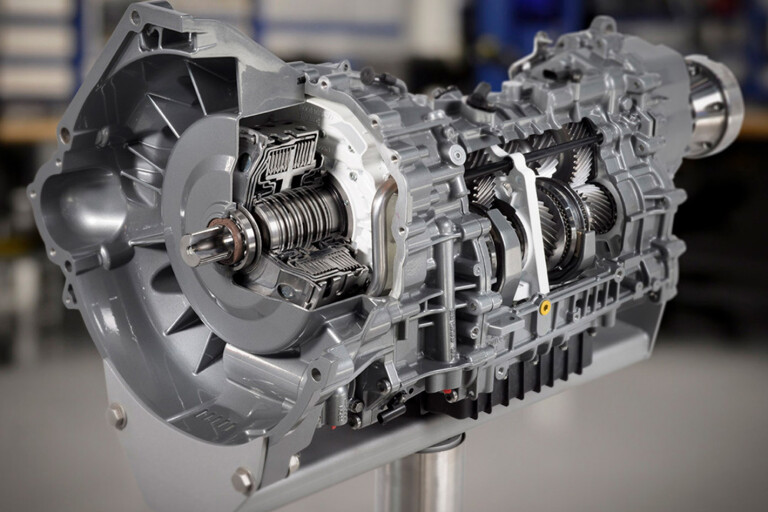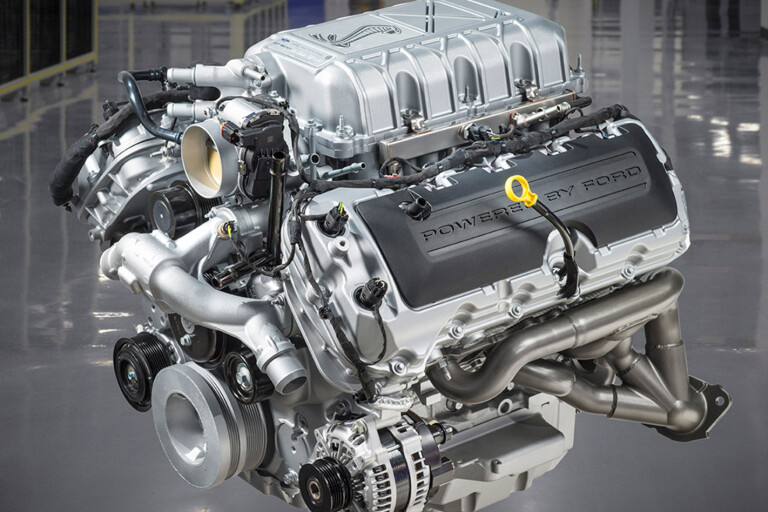
DESPITE withholding some core information about the new Mustang Shelby GT500’s powertrain, the early numbers suggest that Ford has revealed one of the most exciting engines of the year.
The supercharged bent-eight is reported to develop big power, and sounds as tough as a bare-knuckle boxing dinosaur.

Currently, Ford isn’t revealing exact power and performance figures for the GT550, instead stating it will produce “more than” 522kW (no torque figure is provided), crack the 0-97km/h sprint in the mid-3.0 second bracket, and cut a sub-11 second quarter mile. Those are bona fide supercar numbers.
View more photos of the new Shelby Ford Mustang GT500
The Blue Oval’s being surprisingly tight-lipped around much of the GT500’s technical information and final performance figures – wanting instead to drip-feed titbits until the car is launched later this year.
However, the company has let slip some of the details behind the supercharged V8.

The 5.2-litre engine which powers the GT500 starts life as the block which is fitted to the naturally-aspirated GT350 – known as the Voodoo engine.
While it started life identically to the GT350’s power unit, Ford’s engineers had to modify the block significantly to cope with the extra boost and power associated with supercharging.
Changes include longer bolts for the cylinder heads, new gaskets, additional cooling units, and new seals, along with modified cylinder heads designed to cope with the extra heat and pressure.

Allowing the engine to huff down more air is a 2.65-litre Roots-type supercharger, which pumps 12psi of boost. The intercooler for the Eaton-built supercharger is hidden between the engine’s cylinder banks to keep the centre of gravity as low as possible.
Speaking of intercoolers, the GT500 has no fewer than eight heat exchangers – two for the engine, two for the supercharger, one for the transmission, one for the oil, one for the rear axle, and an air conditioning condenser.
When fitted to the GT350, the Voodoo engine has a flat-plane crank, which allows the atmo ‘stang to rev to a higher 8250rpm redline.
This was replaced with a traditional cross-plane crankshaft, with Carl Widmann, chief engineer at Ford Performance, telling Road and Track that the GT350’s crankshaft wouldn’t have had the same benefit in the GT500.

“You don't really need it,” he explains. “Because you’ve got such a short runner off the supercharger … you don’t get a benefit going to a flat plane.”
The GT500’s gaping maw isn’t some frivolous design either, with the engineering team making the frontal opening twice as large as the GT350’s for better cooling.
All that work results in the GT500 having the most powerful engine ever fitted to a roadgoing car in Ford’s history.

Grunt is transferred from the engine to rear treads via a dual-clutch transmission – a first in Mustang history.
The seven-speed unit is supplied by Tremec, and delivers power through a carbonfibre driveshaft and Torsen limited-slip differential. It’s rumoured that this DCT transmission will also be supplied to General Motors for the mid-engined Corvette C8.
While it’s not coming to Australia officially, Mustang Motorsport will be bringing the car Down Under in very limited numbers.


COMMENTS